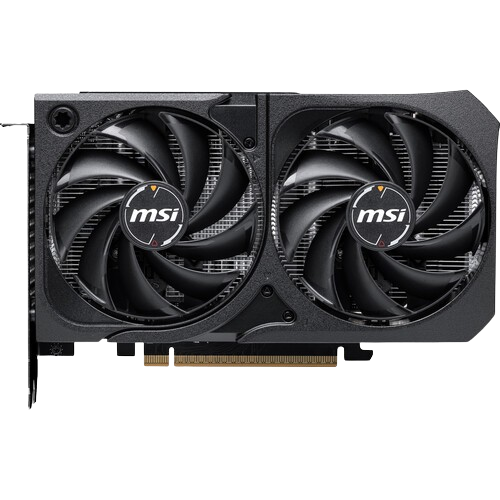
The gaming and creator community is buzzing about the latest addition to the NVIDIA Blackwell family: the GeForce RTX 5050. Designed to bring next-generation performance to a more budget-friendly price point, this card is a game-changer for many. At PowerGPU, we’ve broken down all the essential details to help you understand what this new GPU means for your gaming experience, from its core specifications to its real-world performance.
At a Glance: Key RTX 5050 Specifications
Here’s a quick rundown of the RTX 5050’s essential technical details to give you better insight into what this GPU brings to the table:
- Architecture: NVIDIA Blackwell
- CUDA Cores: 2,560
- Memory: 8GB GDDR6
- Memory Bandwidth: 320 GB/s
- Memory Bus: 128-bit
- Launch Price (MSRP): Starting at $249
- TDP: 130W
- PCIe Interface: PCIe 5.0 x8
This specification sheet shows that NVIDIA has strategically packed the RTX 5050 with impressive hardware for an entry-level price point, which positions it as an exciting option within its category.
A Deep Dive into the RTX 5050’s Features
Blackwell Architecture
The RTX 5050 is built on NVIDIA’s Blackwell architecture, which powers the entire 50-series lineup. Although aimed at budget-conscious users, this architecture retains many of the innovations seen in more expensive models. Key advancements include:
- 5th Gen Tensor Cores
These cores deliver exceptional AI performance, offering solid support for features like DLSS 4. Whether you’re gaming or working with AI-enhanced software, this level of optimization ensures smoother performance.
- 4th Gen Ray Tracing Cores
With upgraded ray tracing cores, users will notice a significant uptick in real-time ray tracing performance. This makes graphics such as lighting and shadows look more realistic, even on a budget card like this one.
- New Streaming Multiprocessors (SMs)
Blackwell architecture enhances neural shader performance, improving both efficiency and processing power across various workloads.
DLSS 4 with Multi-Frame Generation (MFG)
One of the RTX 5050’s standout features is NVIDIA’s latest iteration of Deep Learning Super Sampling (DLSS 4), coupled with Multi-Frame Generation (MFG). This powerful duo significantly increases gaming frame rates while maintaining quality, allowing gamers to enjoy modern titles at higher settings.
For performance-oriented users, the efficiency gain from DLSS 4 is critical, especially when paired with its 8GB of GDDR6 memory. However, even without DLSS in play, the RTX 5050 marks a 50% performance increase over its predecessor, the RTX 3050.
Memory Configuration
To keep costs reasonable, NVIDIA opted for 8GB of GDDR6 memory with the RTX 5050 rather than the faster GDDR7 seen in its more premium counterparts. While this ensures a budget-friendly price, it comes with trade-offs. Although 8GB is sufficient for most 1080p gaming scenarios, future titles or graphics-intensive tasks might push this limit. For gamers sticking to 1080p resolutions, however, this configuration strikes an ideal balance between performance and affordability.
Performance Expectations: Is the RTX 5050 Right for You?
The RTX 5050 offers a solid entry point for gamers and creators seeking NVIDIA’s advanced technologies without breaking the bank. Below are performance insights to help you determine whether it suits your needs.
Key Performance Highlights
- 1080p Gaming
The RTX 5050 excels at 1080p gaming, where it reliably delivers smooth frame rates across a wide selection of popular titles.
- 1440p Gaming
While capable of 1440p gaming for some lower-demand or older titles, the card’s limitations become apparent for graphically intensive games unless DLSS is utilized.
- Ray Tracing
The RTX 5050’s 4th Gen RT cores make real-time ray tracing accessible at an entry-level budget. However, players may need to adjust settings to avoid performance dips, especially in more demanding titles.

RTX 5050 vs. The Competition
Priced at $249 MSRP, the RTX 5050 faces tough competition from alternatives by AMD and Intel. Although slightly pricier options like the RTX 5060 may provide better value in raw performance, the inclusion of DLSS 4 and superior ray tracing capabilities makes the RTX 5050 a strong contender for budget-conscious users who value NVIDIA-specific features.
PowerGPU’s Final Take: The Ideal User for the RTX 5050
The NVIDIA GeForce RTX 5050 is designed for a specific audience, and it serves this demographic exceptionally well:
- Budget-Conscious Gamers
If you’re looking for the next generation of gaming technology from NVIDIA without spending a fortune, the RTX 5050 is a fantastic choice.
- 1080p Enthusiasts
This card provides excellent performance in modern games at standard Full HD resolutions while incorporating ray tracing and DLSS.
- Content Creators and Streamers
Thanks to the 9th Gen NVIDIA Encoder (NVENC), creators can enjoy accelerated workflows for streaming and video editing without compromising on quality.
For gamers and creators eager to build a new PC or upgrade their current setup affordably, the RTX 5050 represents one of the most balanced options available. With its advanced features and approachable price point, it’s a win for anyone looking to experience NVIDIA’s next-generation technology without stretching their budget. Explore our selection of custom PCs and components to find the perfect build for your needs at PowerGPU.
